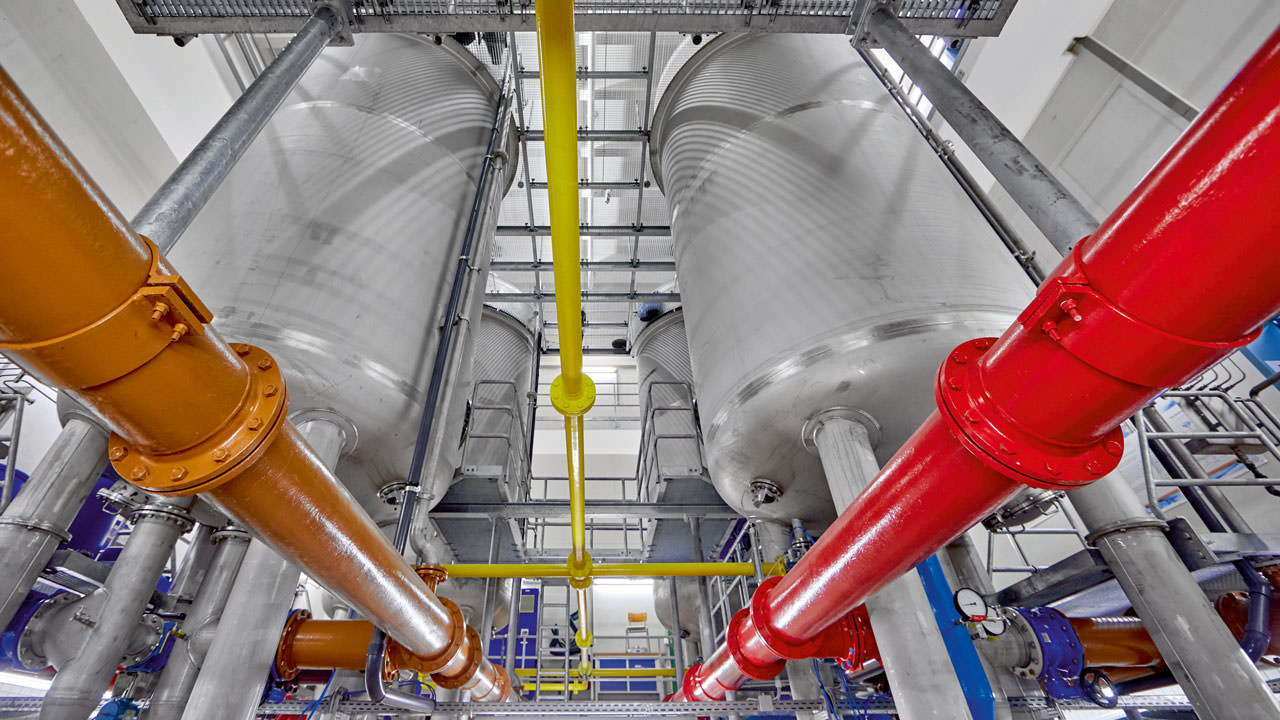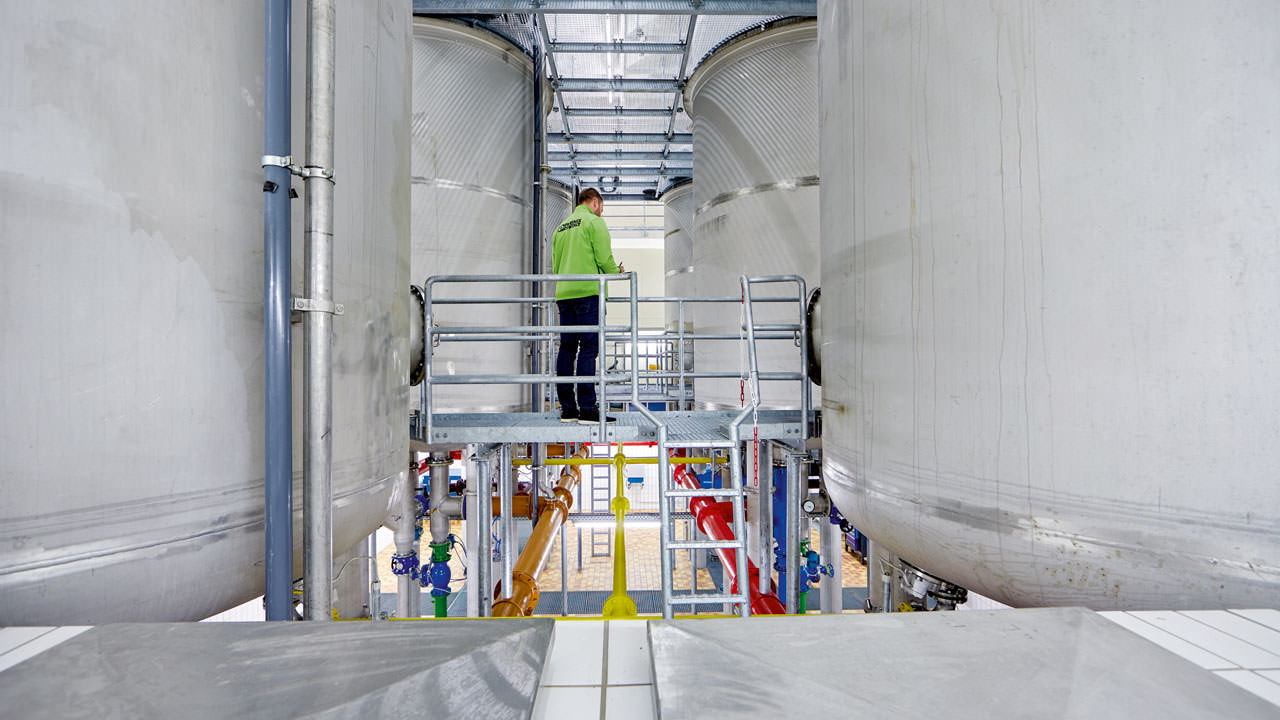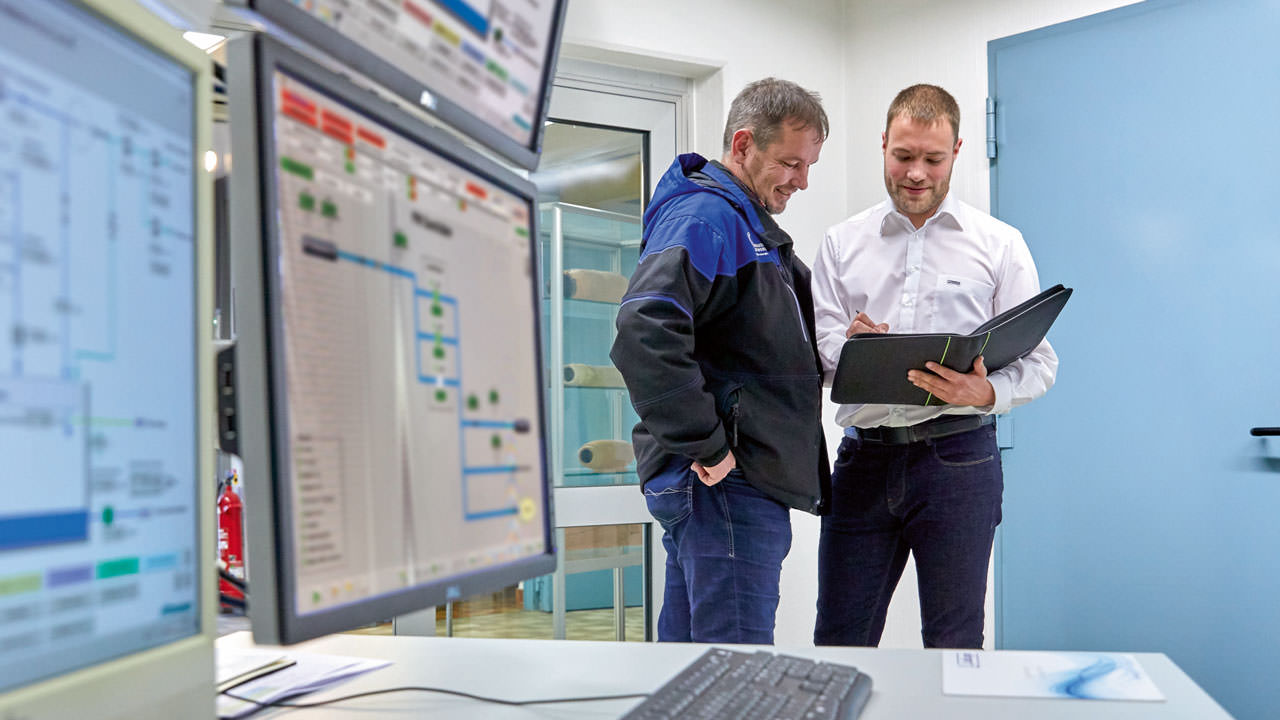ApplicationsMay 10, 2018
Modernizing remote control technology at municipal utility

Through modernizing its plant, the municipal utility Stadtwerke Bad Kreuznach is able to safely and efficiently operate its systems both now and into the future. Open interfaces and extension options will also enable the company to respond to changing requirements in the future both quickly and economically.
To reliably provide drinking water, both the extraction and distribution of water needs to be modernized at regular intervals. This is typically done in several steps, so that the already existing and the new infrastructure are to be operated in parallel over a certain period of time. To this end, modular retrofit solutions with standardized interfaces are the right choice, as shown by the example of the municipal utility Stadtwerke Bad Kreuznach.
Ths municipal utility company supplies drinking water to more than 71,000 inhabitants. In addition, its portfolio encompasses electricity, gas and energy services. The biggest volume of the water required is produced from local sediments of the so-called “Rotliegend” solid rocks and from rhyolite volcanic rocks found in Rhinehessen, followed by water treatment. The public utility company has a total of 25 sources and 34 wells, as well as 23 containers with an aggregate capacity of more than 25,000 cubic meters.
Every year, 4.3 million cubic meters of drinking water are supplied to connected households and businesses over a supply network with a pipeline length of more than 500 kilometers. Following the extension of the supply area, the pipeline network needed to be adapted accordingly.
Within the scope of planning modifications, the responsible persons have also paid attention to automation and remote control technology. “Old and new systems need to be operated in parallel, as the renewal process is to be implemented successively”, said Gunther Christmann from the Water Extraction/Building Services Department of the municipal utility company.
“Another challenge is the fact that automation components from various manufacturers are used in the system,” he added. As a result of these framework conditions, the following is required: open interfaces, standard protocols as well as user-friendly engineering.

Data is transmitted securely from the field level up to the control room.
Highly flexible remote control
The IEC 60870-5-104 remote control protocol is used by the municipal utility Stadtwerke Bad Kreuznach, thereby ensuring the up-to-date, secure, and event-oriented transmission of data. In this way, it is possible to transmit all data with a time stamp.
In addition, the data volume is kept at a low level and all events can be buffered if there is a break in communication. The successor system from the previous manufacturer did not comply with the requirements described above, so the municipal utility Stadtwerke Bad Kreuznach started looking for a suitable alternative. In the end, the decision was made to use the remote control system from Phoenix Contact.
As regards water management, the components, systems and solutions of the Blomberg-based company have proven themselves for many years. The modular remote control stations constitute an important part of the sector-specific portfolio. They are based on a combination of an application-specific controller and the Resy+ function block library for remote control technology. Thanks to the combination of both elements, a modular solution has been created, enabling not only the connection to different control systems but also the easy and flexible adaptation to the respective application.
In addition to remote control technology, the controller is able to perform controlling and monitoring functions due to the applicative implementation of protocols. Resy+ enables connection of remote stations to the control station, using the IEC 60870-5-104, IEC 60870-5-101, DNP3 or ODP remote control protocols. PC Worx, engineering software for programming according to IEC 61131, fieldbus configuration and system diagnostics is used for implementing the connection.
Distances up to 20 kilometers
A large choice of industrial remote communication technology for different transmission media and topologies makes the presented solution complete. Numerous water management companies prefer remote control using their own lines. With regard to this application, extended IP networks can be securely connected using devices from the Ethernet extender product range from Phoenix Contact. Line lengths of up to 20 kilometers can be achieved and components can be started up easily thanks to Plug and Play technology.
If there are no signal lines available, the Phoenix Contact product portfolio offers additional options for integrating distributed stations into control technology. Apart from using the mobile phone network or fiber optics for communication, the user can also create their own wireless networks. For this special application case, Phoenix Contact has developed the license-free Trusted Wireless technology. In addition to the robust transfer of data and the implementation of flexible network structures, this technology distinguishes itself through its access-proof transmission.
The high level of security is achieved by using proven authentication and encryption methods as well as a proprietary approach, meaning that the technology is not publicly accessible. Applications that have been implemented using Trusted Wireless therefore meet all safety requirements in accordance with the state of the art. Due to the wide variety of possible network structures and the wide bridgeable range of up to 20 kilometers, this wireless technology is ideal for networking water distribution systems and other applications.
Fast notification in event of failures
The remote control solution implemented for the municipal utility Stadtwerke Bad Kreuznach is based on Inline controllers of the 100 performance class.
The devices can be extended according to individual needs by aligning I/O modules, being available in a large selection. Furthermore, components of other manufactures (a pump control in the case considered here) can easily be integrated using standard protocols such as Modbus. This solution thus not only fulfills all today’s requirements but is also best suited for future tasks.
The collected data is transmitted by wire to the distributed control system of the control center, using the IEC 60870-5-104 remote control protocol. The entire process can now be remotely controlled by the employees there. They can always view the current state of the system. In addition, the historical data time-stamped by the controller is archived and thus available for comprehensive analyses.
The employees working in the control room can evaluate the transmitted alarms and warnings on an event-oriented basis. Based on this data, an alarm system ensures that the service staff is quickly and reliably notified, if required. After modernizing the first supply line, further stations will follow in the next stages of construction.

Partner for water management
Thanks to modernizations that have already been realized and are still planned, the municipal utility Stadtwerke Bad Kreuznach is able to safely and efficiently operate its systems now and in future. Open interfaces and extension options enable the utility company to respond to future requirements both quickly and economically.
It is already known that remote control technology represents a technical solution suited for large-area systems, installed devices and modules that are widely distributed on the premises as well as for modernization processes on the basis of new instruments. The same applies to the frequent use of different wireless systems for transmitting data in this application area.
However, how do the different solutions differentiate in terms of failsafe performance, bandwidth and IT security? And which security measures need to be taken at all for an individual system or an overall system? Anyone who is not able to answer these questions will find it difficult to find the appropriate solution.

